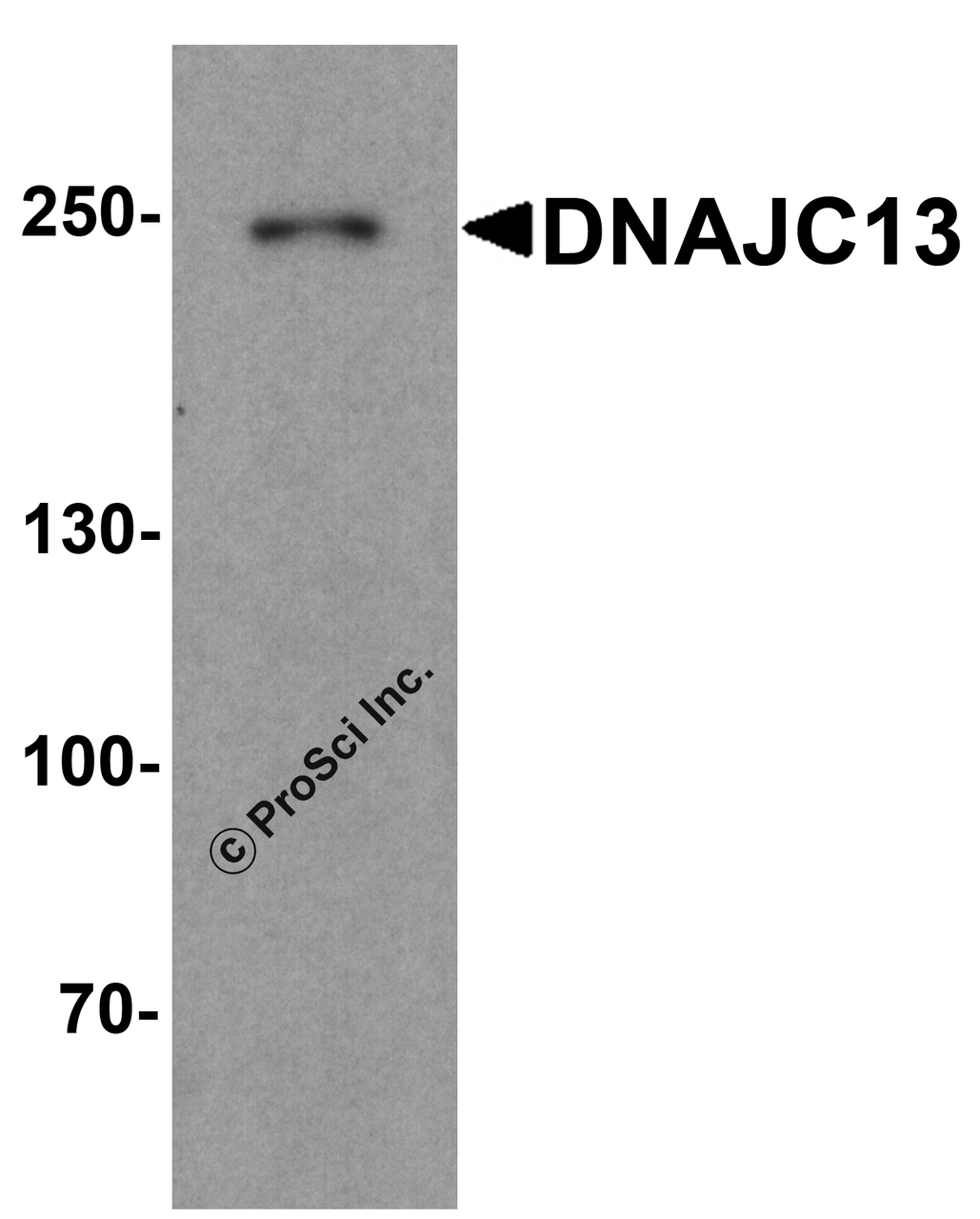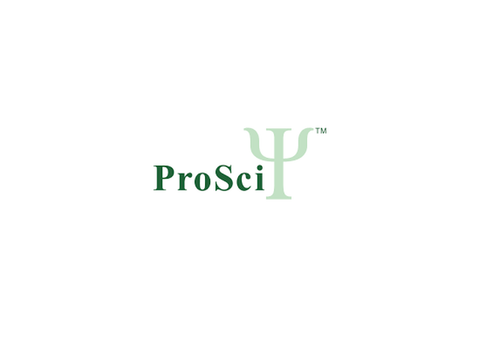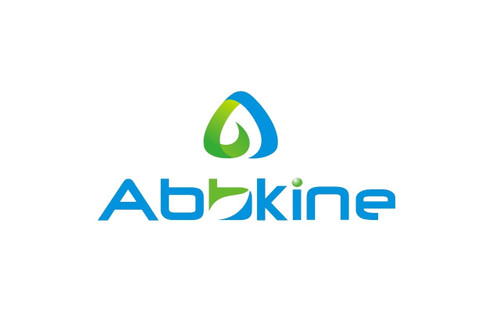Product Description
DNAJC13 Antibody | 8109 | ProSci
Host: Rabbit
Reactivity: Human, Mouse
Homology: N/A
Immunogen: DNAJC13 antibody was raised against an 18 amino acid peptide near the carboxy terminus of human DNAJC13.
The immunogen is located within amino acids 1940 - 1990 of DNAJC13.
Research Area: Homeostasis
Tested Application: E, WB, IHC-P
Application: DNAJC13 antibody can be used for detection of DNAJC13 by Western blot at 1 - 2 μg/mL. Antibody can also be used for immunohistochemistry starting at 5 μg/mL.
Antibody validated: Western Blot in human samples and Immunohistochemistry in human samples. All other applications and species not yet tested.
Specificiy: DNAJC13 antibody is human and mouse reactive. At least two siforms of DNAJC13 are known to exist; this antibody will detect both isoforms. DNAJC13 antibody is predicted to not cross-react with other DNAJC family members.
Positive Control 1: Cat. No. 1301 - Human Heart Tissue Lysate
Positive Control 2: Cat. No. 10-501 - Human Heart Tissue Slide
Positive Control 3: N/A
Positive Control 4: N/A
Positive Control 5: N/A
Positive Control 6: N/A
Molecular Weight: Predicted: 249 kDa
Observed: 249 kDa
Validation: N/A
Isoform: N/A
Purification: DNAJC13 antibody is affinity chromatography purified via peptide column.
Clonality: Polyclonal
Clone: N/A
Isotype: IgG
Conjugate: Unconjugated
Physical State: Liquid
Buffer: DNAJC13 antibody is supplied in PBS containing 0.02% sodium azide.
Concentration: 1 mg/mL
Storage Condition: DNAJC13 antibody can be stored at 4˚C for three months and -20˚C, stable for up to one year.
Alternate Name: DNAJ homolog subfamily C member 13, receptor-mediated endocytosis 8, RME8
User Note: Optimal dilutions for each application to be determined by the researcher.
BACKGROUND: DNAJC13, also known as receptor-mediated endocytosis 8 (RME8) , is the human homolog to a DnaJ domain-containing protein originally identified in a screen for endocytic defects in C. elegans (1) . It is thought to be a co-chaperone of Hsc70 which regulates protein conformation at membrane sites and plays a role in intracellular trafficking, co-localizing with markers of the endosomal system. Recent experiments have indicated that the DNAJC13 protein is involved in membrane trafficking through early endosomes but not through degradative organelles (2) . DNAJC13 has been also been shown to regulate the intracellular trafficking of the epidermal growth factor receptor (3) .
 Euro
Euro
 USD
USD
 British Pound
British Pound
 NULL
NULL
















